|
Your search criteria found 1900 images Gallery: Spacecraft and Technology |
| My List |
Addition Date | Target | Mission |
Instrument
|
Size |

|
2009-07-07 |
Lunar Reconnaissance Orbiter (LRO) |
Diviner |
4000x3000x3 | |

|
|||||

|
2009-07-07 |
Lunar Reconnaissance Orbiter (LRO) |
Diviner |
4000x3000x3 | |

|
|||||

|
2009-07-07 |
Lunar Reconnaissance Orbiter (LRO) |
Diviner |
821x463x3 | |
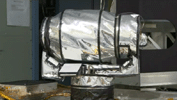
|
|||||

|
2015-12-03 |
LISA Pathfinder |
Disturbance Reduction System |
1024x1262x3 | |

|
|||||

|
2010-11-03 | Earth |
Goldstone Deep Space Network (DSN) |
Deep Space Station 14 |
2560x1920x3 |

|
|||||

|
2010-11-03 | Earth |
Goldstone Deep Space Network (DSN) |
Deep Space Station 14 |
2560x1920x3 |
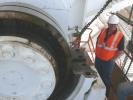
|
|||||

|
2010-11-03 | Earth |
Goldstone Deep Space Network (DSN) |
Deep Space Station 14 |
2560x1920x3 |

|
|||||

|
2010-11-03 | Earth |
Goldstone Deep Space Network (DSN) |
Deep Space Station 14 |
2560x1920x3 |
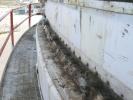
|
|||||

|
2010-11-03 | Earth |
Goldstone Deep Space Network (DSN) |
Deep Space Station 14 |
3264x2448x3 |

|
|||||

|
2010-11-03 | Earth |
Goldstone Deep Space Network (DSN) |
Deep Space Station 14 |
2448x3264x3 |

|
|||||

|
2010-11-03 | Earth |
Goldstone Deep Space Network (DSN) |
Deep Space Station 14 |
3264x2448x3 |

|
|||||

|
2010-11-03 | Earth |
Goldstone Deep Space Network (DSN) |
Deep Space Station 14 |
3872x2592x3 |

|
|||||

|
2010-11-03 | Earth |
Goldstone Deep Space Network (DSN) |
Deep Space Station 14 |
3872x2592x3 |

|
|||||

|
2010-11-03 | Earth |
Goldstone Deep Space Network (DSN) |
Deep Space Station 14 |
2592x3872x3 |

|
|||||

|
2022-04-06 |
Deep Space Optical Communications (DSOC) |
6072x4408x3 | ||
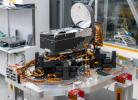
|
|||||

|
2022-04-06 |
Deep Space Optical Communications (DSOC) |
4608x3456x3 | ||

|
|||||

|
2023-10-04 |
Deep Space Optical Communications (DSOC) |
3000x2003x3 | ||

|
|||||

|
2023-10-04 |
Deep Space Optical Communications (DSOC) |
3000x2249x3 | ||

|
|||||

|
2023-11-16 |
Psyche |
Deep Space Optical Communications (DSOC) |
720x723x3 | |

|
|||||

|
2023-12-18 |
Psyche |
Deep Space Optical Communications (DSOC) |
2448x3168x3 | |

|
|||||

|
2008-07-06 | Earth |
Goldstone Deep Space Network (DSN) |
Deep Space Network Antenna |
1148x1119x3 |

|
|||||

|
2010-07-15 | Earth |
Goldstone Deep Space Network (DSN) |
Deep Space Network Antenna |
3648x2736x3 |

|
|||||

|
2010-07-15 | Earth |
Goldstone Deep Space Network (DSN) |
Deep Space Network Antenna |
3648x2736x3 |

|
|||||

|
2010-07-15 | Earth |
Goldstone Deep Space Network (DSN) |
Deep Space Network Antenna |
3648x2736x3 |

|
|||||

|
2010-08-25 | Earth |
Goldstone Deep Space Network (DSN) |
Deep Space Network Antenna |
1920x1080x3 |

|
|||||

|
2010-08-25 | Earth |
Goldstone Deep Space Network (DSN) |
Deep Space Network Antenna |
4000x3000x3 |

|
|||||

|
2010-08-25 | Earth |
Goldstone Deep Space Network (DSN) |
Deep Space Network Antenna |
4000x3000x3 |

|
|||||

|
2021-06-30 |
Deep Space Atomic Clock (DSAC) |
Deep Space Atomic Clock (DSAC) |
6226x3636x3 | |

|
|||||

|
2009-10-13 |
Wide-field Infrared Survey Explorer (WISE) |
Cryostat |
828x624x3 | |

|
|||||

|
2007-04-11 |
Terrestrial Planet Finder |
Coronograph |
840x840x3 | |

|
|||||

|
2021-11-03 |
COWVR |
Compact Ocean Wind Vector Radiometer (COWVR) |
1000x750x3 | |

|
|||||

|
2022-02-01 | Moon |
Cold Operable Lunar Deployable Arm (COLDArm) |
4032x3024x3 | |

|
|||||

|
2022-12-05 | Moon |
Cold Operable Lunar Deployable Arm (COLDArm) |
8256x5504x3 | |

|
|||||

|
2022-12-05 | Moon |
Cold Operable Lunar Deployable Arm (COLDArm) |
5504x8256x3 | |

|
|||||

|
2022-12-05 | Moon |
Cold Operable Lunar Deployable Arm (COLDArm) |
8256x5504x3 | |

|
|||||

|
2023-12-20 | Moon |
Cold Operable Lunar Deployable Arm (COLDArm) |
8272x6200x3 | |

|
|||||

|
2012-10-04 |
Mars Science Laboratory (MSL) |
CHIMRA |
1438x933x3 | |

|
|||||

|
2012-10-04 |
Mars Science Laboratory (MSL) |
CHIMRA |
1438x933x3 | |

|
|||||

|
2013-02-20 | Mars |
Mars Science Laboratory (MSL) |
CHIMRA |
2560x1600x3 |

|
|||||

|
2013-02-20 | Mars |
Mars Science Laboratory (MSL) |
CHIMRA |
1280x720x3 |

|
|||||

|
2013-02-20 | Mars |
Mars Science Laboratory (MSL) |
CHIMRA |
1805x1351x3 |

|
|||||

|
2013-12-09 | Mars |
Mars Science Laboratory (MSL) |
ChemCam SAM |
960x720x3 |

|
|||||

|
2011-04-06 |
Mars Science Laboratory (MSL) |
ChemCam Mastcam |
5166x3499x3 | |

|
|||||

|
2010-12-23 |
Mars Science Laboratory (MSL) |
ChemCam |
4368x2523x3 | |

|
|||||

|
2011-11-28 |
Mars Science Laboratory (MSL) |
ChemCam |
853x720x3 | |

|
|||||

|
2011-11-28 |
Mars Science Laboratory (MSL) |
ChemCam |
953x720x3 | |

|
|||||

|
2011-11-28 |
Mars Science Laboratory (MSL) |
ChemCam |
1280x720x1 | |

|
|||||

|
2011-11-28 |
Mars Science Laboratory (MSL) |
ChemCam |
923x693x3 | |

|
|||||

|
2012-08-17 | Mars |
Mars Science Laboratory (MSL) |
ChemCam |
2343x915x3 |

|
|||||

|
2012-08-17 | Mars |
Mars Science Laboratory (MSL) |
ChemCam |
5632x2048x1 |

|
|||||

|
2012-08-22 |
Mars Science Laboratory (MSL) |
ChemCam |
1826x774x3 | |

|
|||||

|
2013-02-04 | Mars |
Mars Science Laboratory (MSL) |
ChemCam |
750x750x1 |

|
|||||

|
2013-02-04 | Mars |
Mars Science Laboratory (MSL) |
ChemCam |
750x750x1 |

|
|||||

|
2013-04-08 | Mars |
Mars Science Laboratory (MSL) |
ChemCam |
960x720x3 |

|
|||||

|
2013-04-08 | Mars |
Mars Science Laboratory (MSL) |
ChemCam |
960x720x3 |

|
|||||

|
2013-07-09 | Mars |
Mars 2020 Rover Mars Science Laboratory (MSL) |
ChemCam |
2880x1624x3 |

|
|||||

|
2013-12-05 | Mars |
Mars Science Laboratory (MSL) |
ChemCam |
960x720x3 |

|
|||||

|
2010-06-28 |
Mars Science Laboratory (MSL) |
CheMin |
1080x720x3 | |

|
|||||

|
2010-06-28 |
Mars Science Laboratory (MSL) |
CheMin |
2604x1560x3 | |

|
|||||

|
2012-10-30 |
Mars Science Laboratory (MSL) |
CheMin |
1316x742x3 | |

|
|||||

|
2012-10-30 |
Mars Science Laboratory (MSL) |
CheMin |
617x500x3 | |

|
|||||

|
2012-10-30 |
Mars Science Laboratory (MSL) |
CheMin |
630x500x3 | |

|
|||||

|
2012-10-30 |
Mars Science Laboratory (MSL) |
CheMin |
2048x1536x3 | |

|
|||||

|
2012-10-30 | Mars |
Mars Science Laboratory (MSL) |
CheMin |
582x600x3 |

|
|||||

|
2016-12-13 | Mars |
Mars Science Laboratory (MSL) |
CheMin |
1708x982x3 |

|
|||||

|
2016-12-13 | Mars |
Mars Science Laboratory (MSL) |
CheMin |
660x424x3 |

|
|||||

|
2016-12-13 | Mars |
Mars Science Laboratory (MSL) |
CheMin |
534x391x3 |

|
|||||

|
2016-12-13 | Mars |
Mars Science Laboratory (MSL) |
CheMin |
583x583x3 |

|
|||||

|
2023-08-24 |
Carbon Mapper Coalition |
Carbon Mapper Imaging Spectrometer |
8256x5504x3 | |
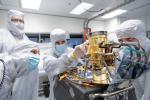
|
|||||

|
2023-09-14 |
Carbon Mapper |
Carbon Mapper Imaging Spectrometer |
3024x3141x3 | |

|
|||||

|
2023-09-14 |
Carbon Mapper |
Carbon Mapper Imaging Spectrometer |
3024x4032x3 | |

|
|||||

|
2023-09-14 |
Carbon Mapper |
Carbon Mapper Imaging Spectrometer |
3024x4032x3 | |

|
|||||

|
2023-09-14 |
Carbon Mapper |
Carbon Mapper Imaging Spectrometer |
909x660x3 | |

|
|||||

|
2023-09-14 |
Carbon Mapper |
Carbon Mapper Imaging Spectrometer |
1350x750x3 | |

|
|||||

|
2023-09-14 |
Carbon Mapper |
Carbon Mapper Imaging Spectrometer |
3024x4032x3 | |

|
|||||

|
2023-09-14 |
Carbon Mapper |
Carbon Mapper Imaging Spectrometer |
3024x4032x3 | |

|
|||||

|
2004-04-09 |
Mars Exploration Rover (MER) |
Capture Magnet |
480x360x3 | |

|
|||||

|
2014-03-17 |
BICEP2 Telescope |
3000x2884x3 | ||

|
|||||

|
2014-03-17 |
BICEP2 Telescope |
1280x1024x3 | ||

|
|||||

|
2014-03-17 |
BICEP2 Telescope |
3072x2304x3 | ||

|
|||||

|
2008-09-17 |
Aqua |
AIRS |
722x485x3 | |

|
|||||

|
2022-06-29 |
ASTHROS |
ASTHROS |
5120x3840x3 | |

|
|||||

|
2022-06-29 |
ASTHROS |
ASTHROS |
5120x3840x3 | |

|
|||||

|
2022-06-29 |
ASTHROS |
ASTHROS |
6800x3600x3 | |

|
|||||

|
2022-06-29 |
ASTHROS |
ASTHROS |
5120x3840x3 | |

|
|||||

|
2022-06-29 |
ASTHROS |
ASTHROS |
1600x800x3 | |

|
|||||

|
2011-01-26 |
Aquarius |
Aquarius |
928x768x3 | |

|
|||||

|
2012-02-07 |
Mars Science Laboratory (MSL) |
Alpha Particle X-ray Spectrometer MAHLI |
2832x4256x3 | |

|
|||||

|
2012-12-03 | Mars |
Mars Science Laboratory (MSL) |
Alpha Particle X-ray Spectrometer (MSL) |
1600x1200x3 |

|
|||||

|
2013-03-18 | Mars |
Mars Science Laboratory (MSL) |
Alpha Particle X-ray Spectrometer (MSL) |
1883x1179x3 |

|
|||||

|
2004-01-20 |
Mars Exploration Rover (MER) |
Alpha Particle X-ray Spectrometer |
1620x1431x3 | |
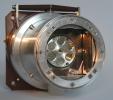
|
|||||

|
2011-02-18 |
Mars Science Laboratory (MSL) |
Alpha Particle X-ray Spectrometer |
4000x3000x3 | |

|
|||||

|
2009-10-13 |
Mars Science Laboratory (MSL) |
Alpha Particle X-ray Spectrometer |
4000x3000x3 | |

|
|||||

|
2005-11-03 |
Stardust |
Aerogel Dust Collector |
746x574x3 | |

|
|||||

|
2012-06-15 | Venus |
ACRIMSAT |
ACRIM3 |
4800x3600x1 |

|
|||||

|
2003-10-22 | Mars |
Mars Express (MEX) |
5431x4691x3 | |

|
|||||

|
1997-01-15 | 1930x2440x3 | |||

|
|||||

|
1999-05-03 | 2000x2445x3 | |||

|
|||||

|
2000-11-06 | 4206x3306x3 | |||

|
|||||

|
2001-03-29 | 4500x5600x3 | |||

|
|||||

|
 |
 |
 |
 |
 |
 |
 |
 |
 |
 |

|
| 1-100 | 101-200 | 201-300 | 301-400 | 401-500 | 501-600 | 601-700 | 701-800 | 801-900 | 901-1000 |
| Currently displaying images: 401 - 500 of 1900 |